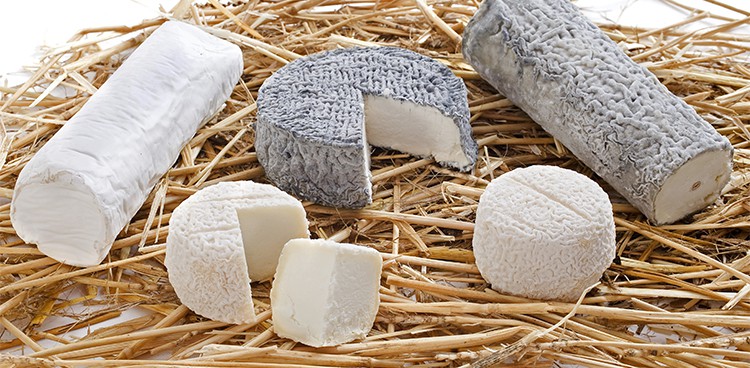
At a loss for words when describing your favorite chèvre? A new lexicon created by Kansas State University researchers could help you expand your tasting vocabulary.
This flavor guide, published recently in the Journal of Sensory Studies, is believed to be the first of its kind for goat cheese; ones for cheddar and Comté already exist. Five sensory experts taste-tested 47 types and ultimately found 39 ways to describe their flavors, ranging from foul (“decaying animal,” “chemical”), to earthy (“mushroomy”), to sweet (“pineapple”).
The samples came from artisan American makers and included mild chèvres, feta-style cheese, and pungent mold-ripened wheels. Panelists noted not only the flavors, but also scents and textures. They compared their results to other cheese lexicons and found that most of the tastes they encountered—including “dairy sour,” “astringent,” and “butyric acid”— were known descriptors. Five of the attributes were new and unique to goat cheese: “overall dairy,” “lemon,” “white pepper,” “soapy,” and “black walnut.”
All 47 cheeses exhibited salty, sour, and bitter tastes, as well as biting, pungent, and sharp mouthfeels to varying degrees. Another common flavor? “Goaty.”
“Goaty is a very unique characteristic flavor attribute for products made out of goat milk,” assistant professor Martin Talavera said in a Kansas State press release. “It’s very common across all of the different cheese styles, but it tended to be slightly higher for products with mold growth, which have a more complex flavor.”
The diagram above shows the breakdown of the samples. Cluster 1 represents the “strong” cheeses with moldy, animalic, and herbal notes; many of the mold-ripened curds fell into this category. Cluster 2 encompasses a mix of flavors, including sharp, salty, and cooked milk. Cluster 3 features the mildest of the bunch with “no overpowering notes”; it included all of the cheddar and chèvre-style goat cheeses and most of the feta-style. Researchers found that chèvres generally had the simplest flavors. The cheddar-style goat cheeses were nuttier and sweeter, while salty best characterized the feta-style samples. Most of the mold-ripened selections could best be described as pungent, musty, and sharp.




